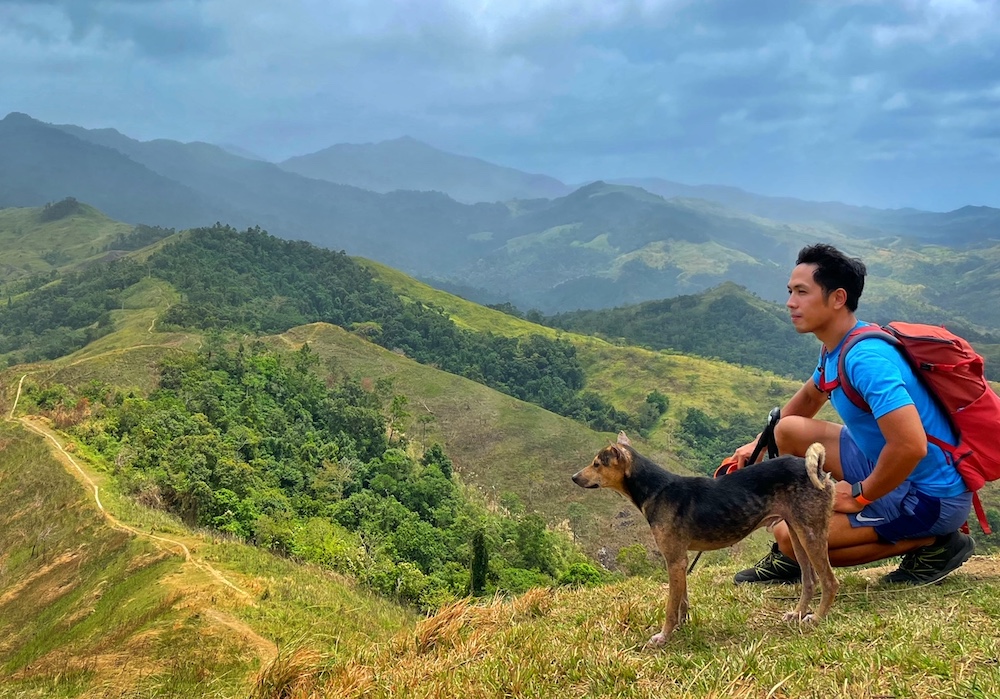What Dog Breeds Say About Race
In the Philippines, the most sought-after dogs are those that have a breed—and preferably a certificate that proves their provenance. Be it Alaskan malamute, German shepherd, or Siberian husky, the rule is: the purer, the better. Dogs who are partially purebred, known as may lahi or nalahian (literally, “with breed” or “bred”), come slightly lower in the ranks.
At the very bottom are the lowly aspins, or Filipino dogs (a portmanteau word blending aso, or dog, and Pinoy, an informal term for Filipino). Also known by the more negative term askals (street dogs), these local, mixed-breed dogs vary in appearance and are often perceived by Filipinos to be inferior in beauty and intelligence to dogs with “breeding.”
Dog owners sometimes segregate their dogs according to these ranks. An animal welfare advocate working on behalf of aspins describes how this tendency has historically played out: “In a household, the common scenario was that there would be an aspin outside as a guard dog, while the Shih Tzus, Pomeranians, and golden retrievers shared the indoor space with their owners.” Such owners would often only take their purebred dogs on walks or to the groomers.
The practice of certifying, valuing, and ordering dog breeds is common around the world; for example, certain dog breeds are associated with gentrification in New York City. What is peculiar to the Philippines, however, is how the hierarchy of dogs parallels how a particular group of humans—Filipinos—rank themselves in terms of race or ethnicity.
Just like with dogs, Filipinos with a recognizable foreign heritage are celebrated, especially those with European or East Asian ancestry. Mixed-heritage celebrities and beauty queens in the country are routinely described in popular discourse with the offensive terms “half-breeds” or “half-bloods,” and praised for the attractiveness of their “foreign blood.” Those who have no manners, by contrast, are sometimes described as having “no breeding.”
As an anthropologist, I find this interspecies parallelism deeply fascinating, as it reveals not just how Filipinos view nonhuman animals, but how we view ourselves. It’s one example of how humans and dogs around the world have been entangled for millennia in a process of coevolution, cohabitation, and companionship.
Researchers agree that dogs were the first animal to be domesticated by humans, sometime between 15,000 and 40,000 years ago, though they disagree on the specifics of when, where, and how it happened.
In the Philippines, scientists estimate that dogs were around for thousands of years before Spanish colonization in the 16th century. Archaeological evidence of domesticated dog remains, including a dog buried alongside a human child between the 12th and 15th centuries, suggests that dogs were seen as valued companions. This likelihood finds corroboration in folkloric accounts in which dogs figure prominently. In Biag ni Lam-ang, for instance, an epic passed down among the Ilocano people of the northwestern region of the Philippines, the titular hero, Lam-ang, had a magical pet dog.
But colonial encounters with Spain changed the way Filipinos viewed dogs—and themselves. In a world where Whiteness carried privileges, people with a foreign pedigree—and certain physical traits, such as lighter skin—had more life opportunities. This provided a form of power that scholars today call “racial capital,” or the socioeconomic advantages conferred by one’s racial identity.
Starting in the 19th century, scientific racism gave form and shape to those ideas about privilege by attempting to divide the human species into biological races and place them in a hierarchy. (These ideas have since been discredited, and anthropologists today acknowledge the reality of race not as biological but as a “culturally created phenomenon.”)
As in other parts of the world colonized by Europeans, foreign dog breeds arrived in the Philippines alongside their human counterparts. They became valued pets, first for the colonizers and, eventually, among Filipino elites. At the same time, other Filipinos continued to keep local dogs as all-around companions: part-pet, part-security, and for some, a source of food too.
Colonizers brought with them the idea of valuing “purebred” dogs, which had emerged in England during the Victorian period, around the same time as the rise of scientific racism. Advocates of these ideas held that some dogs had fixed breeds or lineages and that these “pure and ancient” breeds were superior to “mongrels.” Popular breed designations, however, were based on arbitrary characteristics perpetuated by invented classifications and breeding practices.
In many ways, the creation of dog breeds mirrored how human race categories were created, defined, and ordered. Not coincidentally, some dog breeding promoters were also early proponents of the eugenics movement, which is the unethical and dangerous idea that human populations can be “improved” by selective breeding for “positive” traits.
In the early 20th century, relationships between humans and dogs in the Philippines changed once again. At the advent of the U.S. occupation of the country, the role of dogs in Filipino people’s diets was exaggerated. Filipinos were exoticized and pejoratively described as “dogeaters”—a racist label that still informs the Filipino American experience today.
It serves as a reminder that relationships between humans and dogs vary considerably across different places and times—but those in power often determine which kinds of interspecies relationships are considered acceptable.
Fast forward to today, and status continues to determine the kinds of dogs found in Filipino households and the roles they play. Dogs with breed continue to grace the households of the upper and middle classes.
Even though purebreds tend to have higher rates of genetic defects due to inbreeding, and can be difficult to maintain due to their unsuitability in the tropical climate, they tend to live longer than their local counterparts. According to veterinarian and anthropologist Michael Tan, class differences are the reason why purebred pets live longer.
“Yup, it’s the upper classes who can afford to pay thousands of pesos for a purebred dog or cat,” Tan says. “And although they may have all kinds of genetic disorders, their humans can afford the best veterinary care possible, plus better nutrition and housing, sometimes superior to what the human poor will get.”
On the other hand, local dogs often end up living in urban and rural poor communities. They are sometimes left to fend for themselves in the streets, leading many residents to ascribe negative characteristics to these dogs, such as foul smells and bad behavior. Similar to how human differences get mapped onto races, dog characteristics are “naturalized” to legitimize a hierarchy based on breed.
Categories, however, can be challenged—and this is true for both humans and nonhuman animals.
In the late 2000s, when the Philippines reinvigorated its football team, they were nicknamed the “Azkals” in reference to the “half bred” nature of the players, many of whom came from abroad. The name has also come to reference the resourceful, resilient character of the players and, indirectly, perhaps the perceived “underdog” status of both the team and the nation in relation to global competitors. By embodying a new identity that embraces features perceived as “Western,” such as fair skin, the football players are also contributing to changing notions of what it means to be Filipino.
Mirroring this discourse are growing efforts to advocate for local dogs. In 2006, a “native dog beauty pageant” was held by the Philippine Animal Welfare Society (PAWS), which led to news stories extolling the virtues of askals and recommending that they be referred to instead by the more positive name aspin. One newspaper columnist noted the remarkable shift that had taken place in just a few years: “I have been witness to how the native dog or aspin has created its own loyal following among pet-lovers.”
While these news reports were explicitly talking only about dogs, these discussions are not separate from comparisons made between humans based on race and nationality. “When someone says you’re just an askal, it’s like saying, you’re just a Pinoy,” as a PAWS veterinarian said, referring to the familiar demonym used for Filipinos. “Does that reflect how we see ourselves?”
In this vein, it is worth adding that some portrayals of aspins flip this script by referring to the positive traits these local dogs are perceived to share with Filipinos. As one newspaper writer put it, the headstrong but affectionate nature of her aspin is what makes her beloved dog “really, so Pinoy.”
Celebrity native dog advocate Heart Evangelista encourages people to see mixture—whether of race or of breed—as a point of pride, not of embarrassment. Evangelista, who has been featured in an ad campaign for PAWS posing with her dog, Charles, a “half-terrier, half-native dog,” was quoted as saying, “I have a mixture of Filipino, Spanish, and Chinese blood, so I am also a mixture of ‘many breeds.’”
“It is something to be proud of,” she added, “because Filipinos and aspins are [both] 100 percent beautiful.”


































